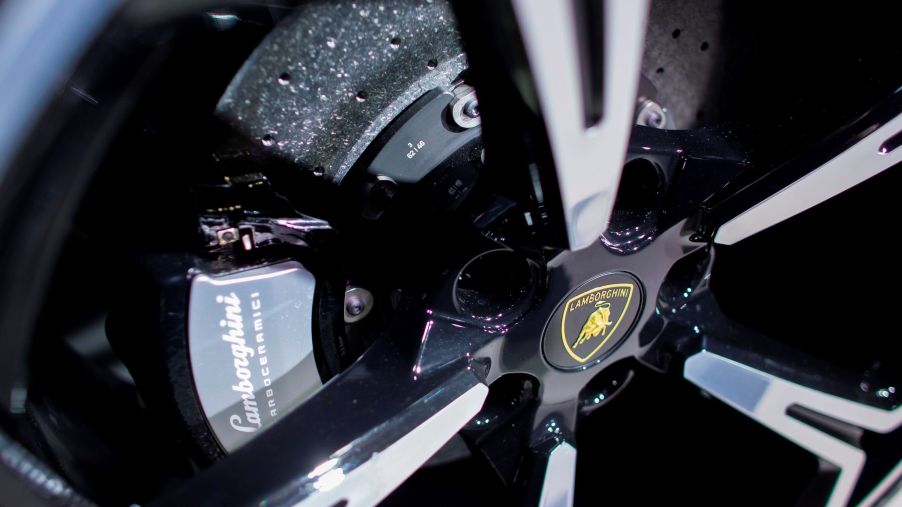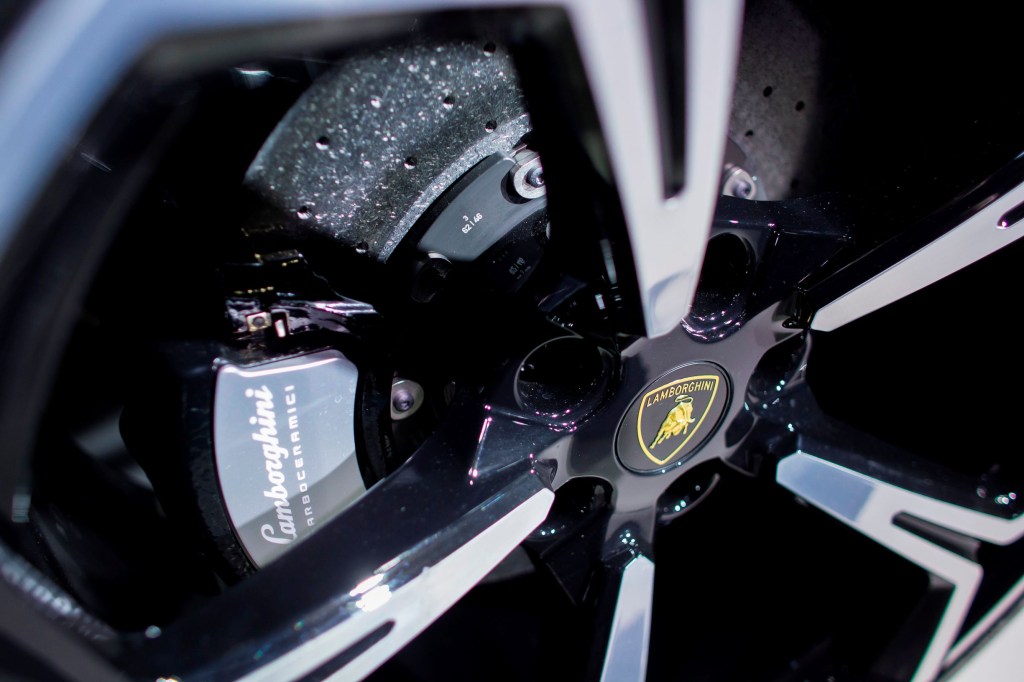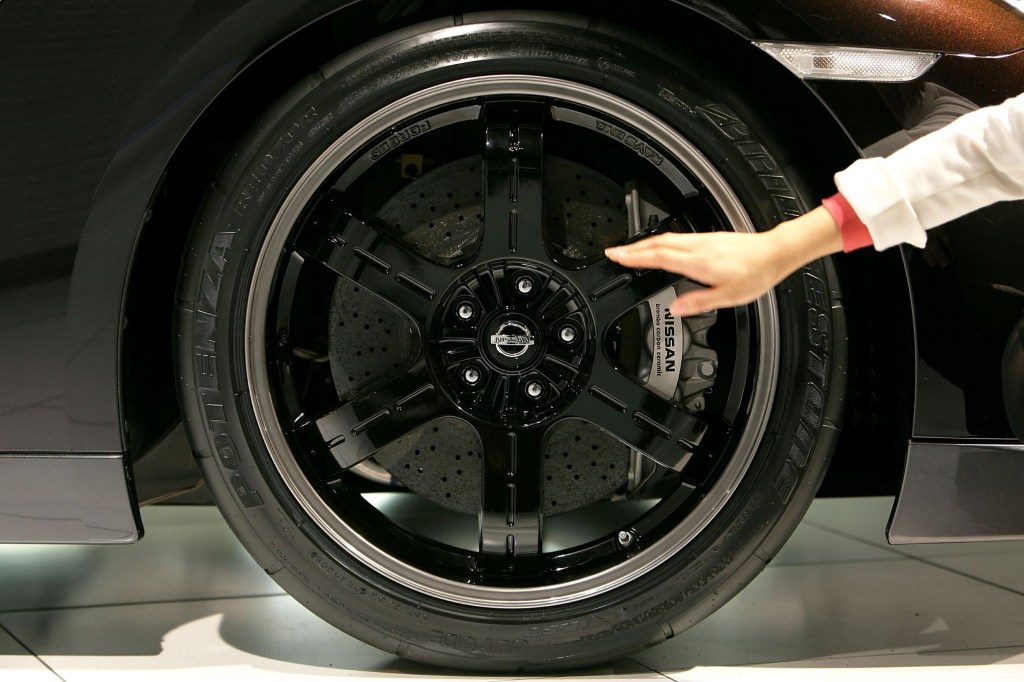
Is Giving Your Car Carbon-Ceramic Brakes Worth It?
Your brake pads, like your rotors, aren’t just maintenance items. As with your tires, wheels, intake, and exhaust, you can swap them out for upgraded versions. And when it comes to high-performance cars, carbon-ceramic brakes are a common feature. But are these ceramic brakes a modification worth pursuing?
What’s different about carbon-ceramic brakes?
Although a select few cars retain drum brakes, disc brakes are the prevailing design. And they all work basically the same way: two pads clamp down on a rotor and through friction slow the car down. But where these brakes differ is in their pad material, The Drive reports.
There are three main types of brake pads: organic, metallic, and ceramic. Organic pads can still have metal and ceramic components, but they’re mixed in with materials like Kevlar, resin, and even glass. Metallic, aka ‘semi-metallic’ pads, as their name implies, are mostly metal—at least 30% content, FCP Euro reports. Although copper is being phased out of the formulas, due to its polluting potential.

So where does that leave ceramic brakes? Some do have copper fibers, YourMechanic reports. But mostly the pads and rotors are composed of various components and resins baked into ceramic form, Car and Driver explains. In the case of carbon-ceramic brakes, the usual ingredients are silicon carbide and carbon fibers, Edmunds and TuningBlog report.
And the phrase ‘carbon-ceramic brakes’ doesn’t just refer to the pads, Edmunds reports. Organic and metallic pads typically work with iron or steel rotors, and there are stand-alone ceramic brake pads. But a full carbon-ceramic brake package uses the material both in the pads and the rotors.
What are the benefits of carbon-ceramic brakes? Are there any downsides?
Even if you only have ceramic brake pads with a ‘conventional’ rotor, they do have some upsides, Bridgestone Tire reports. They’re quieter than organic or metallic pads and produce less dust. They also last significantly longer, can tolerate a greater range of temperatures, and fade less as they heat up, TireRack reports.
As for full carbon-ceramic brakes, they also offer little fade and long service lives, Autotrader reports. And with little-to-no metal, they don’t rust as easily, if at all. But arguably just as importantly, they weigh significantly less than the equivalent metal-based assembly, CarBibles reports. That reduces unsprung weight, which improves handling, ride comfort, steering, and even fuel economy.
However, for these pros, there are a few cons. Firstly, although carbon-ceramic brakes can theoretically last longer on the street, they still degrade quickly during repeated racetrack use. Enough that Porsche had to stop claiming its brakes could “’ last virtually for the life of the car,’” Autoblog reports.
Secondly, although ceramic brake pads and rotors can handle higher temperatures, they’re not as good at low temperatures, AutoGuide reports. Different brake pads have different ideal operating temperatures, Road & Track explains. And ceramic pads’ heat-fade resistance comes at the cost of worse cool-temperature performance. They actually have to heat up slightly to really work well.
Finally, carbon-ceramic brakes are significantly more expensive than steel, iron, or organic ones. For a 991.2-gen 911, for example, the standard pads are, as of this writing, $182.30 at Suncoast Parts. As of this writing, the ceramic ones are $510. That’s why one Porsche representative actually recommends regular track racers stick to the brand’s steel rotors, Motor1 reports. Although they’re heavier, they deliver similar braking performance at a discount.
Should you install them on your car?

So, does that mean you should or shouldn’t get carbon-ceramic brakes? If they’re standard equipment on your sports car or supercar, they’re standard equipment for a reason. But if the question is upgrading your current braking equipment, that depends.
If your goal is reducing brake fade, ceramic pads aren’t your only option. There are special racing compounds and high-temperature brake fluids available, R&T reports. And these modifications are likely more affordable long-term than carbon-ceramic brakes.
That being said, if you regularly drive at higher temperatures and these solutions aren’t working, ceramic compounds are a logical next step. And if you’re trying to extract every bit of weight-savings potential, they do genuinely help.
What about brake dust? Admittedly, they do produce significantly less of it. However, if you’re a Porsche owner, there is an alternative: tungsten carbide. According to Porsche, brake rotors are actually responsible for 70% of brake dust, Car and Driver reports. So, instead of swapping the pads, the automaker introduced iron rotors coated in tungsten carbide.
Tungsten carbide is significantly harder than steel, so it wears less over time. Porsche claims the coated rotors reduce dust by 90%, R&T reports. Which, according to Car and Driver’s test results, is a legitimate claim. It also improves corrosion resistance and stopping distance, Automotive News reports. Plus, while the rotors are more expensive than iron ones, they’re significantly cheaper than carbon-ceramic ones.
So, is it worth upgrading your brakes to carbon-ceramic ones? If you’re a professional racer, maybe. But if you’re just driving on the street in normal conditions, probably not.
Follow more updates from MotorBiscuit on our Facebook page.


